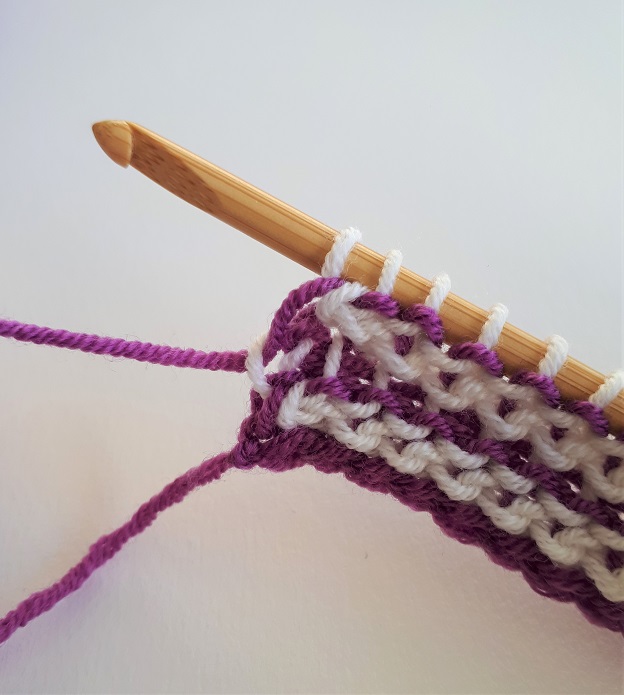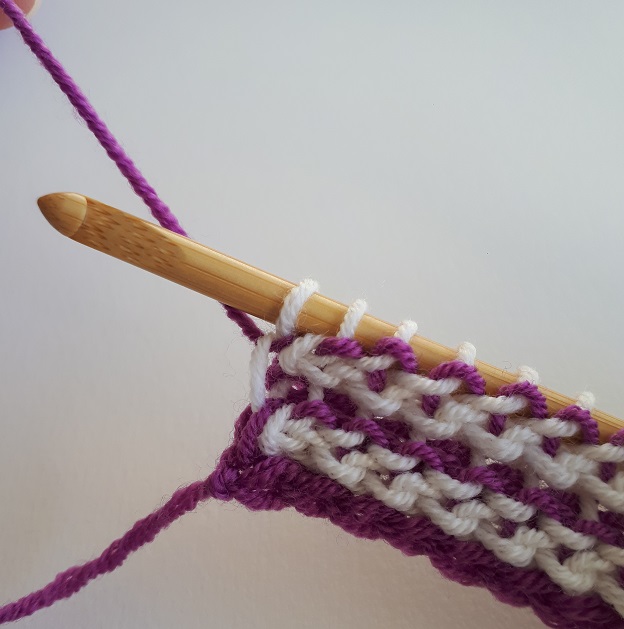The first thing to note about working flat (as opposed to “in the round”) with a double-ended Tunisian crochet hook is that the quantity of fabric is evenly spread over both sides of work. Therefore curling is not really an issue with this technique. And if you work with the same stitches in all rows, the fabric will be reversible: it will look the same on both front and back sides.
In the photo tutorial below, I use a double-ended hook and 2 yarn threads of different colors. If this is your first time with this technique, I encourage you to do the same. To keep it as clear as possible, I use the Tunisian simple stitch. But you can make any other Tunisian stitches. You can use only one color as well for both threads of yarn. You choose what you like best.
Foundation row – Forward pass
Start with a foundation row. Here for the tutorial, I started with chains in which I picked up loops, just like for a “standard” foundation row with a single-ended hook.
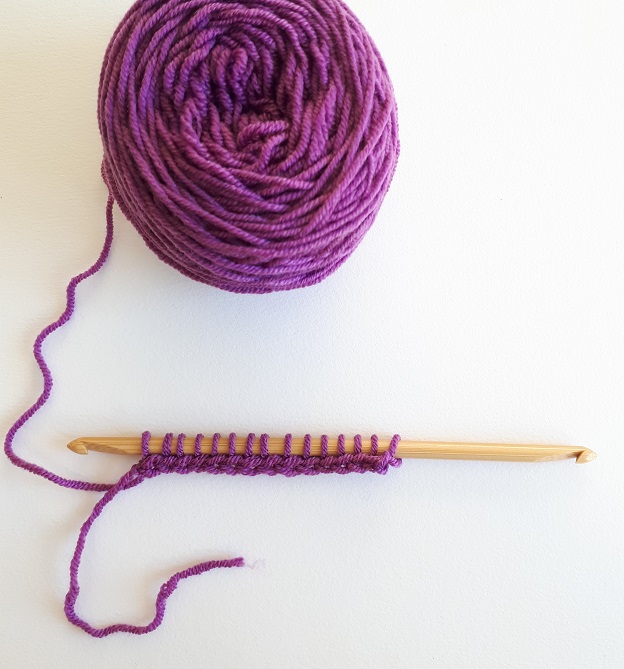
Foundation row – Return pass
The big difference between using a single-ended or double-ended hook is here. To start the return pass, turn your work and, with the head at the other side of your hook and a new thread of yarn (white), start a return pass. Chain 1 (pull new yarn through 1 loop), then work loops off the hook by making a yarn over and pulling yarn through 2 loops again and again until there is only 1 loop left on the hook.
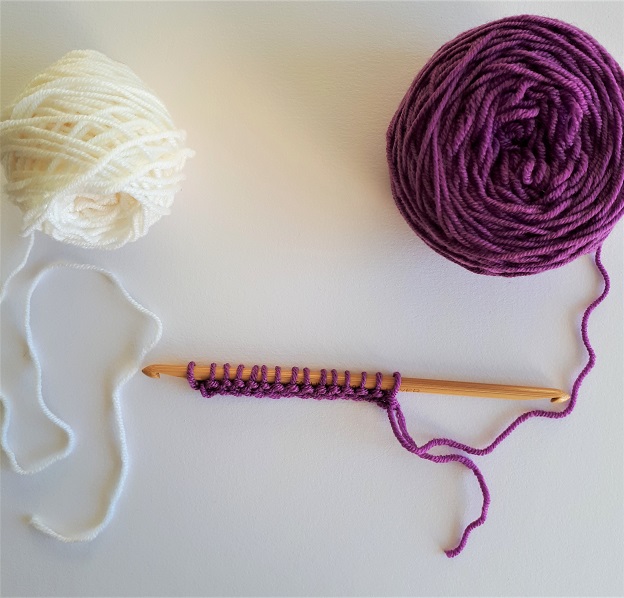
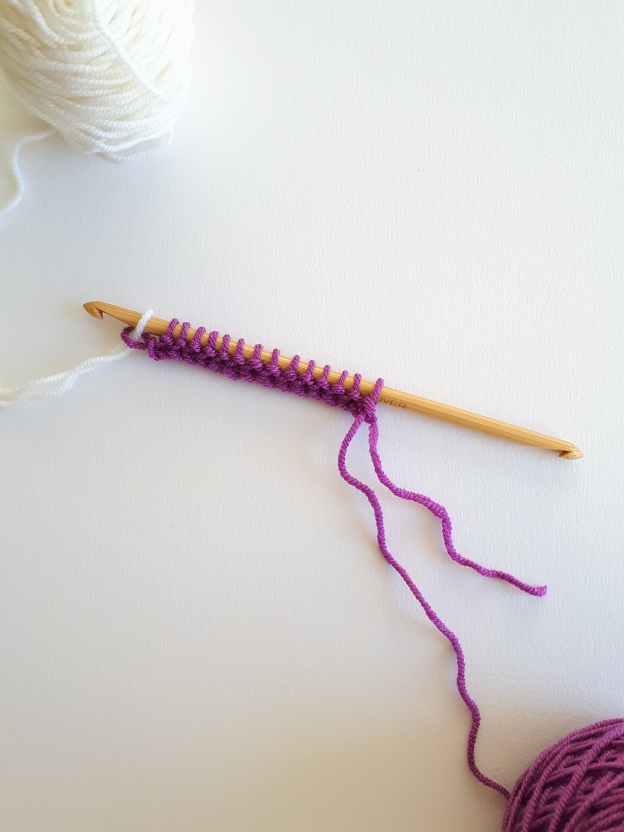
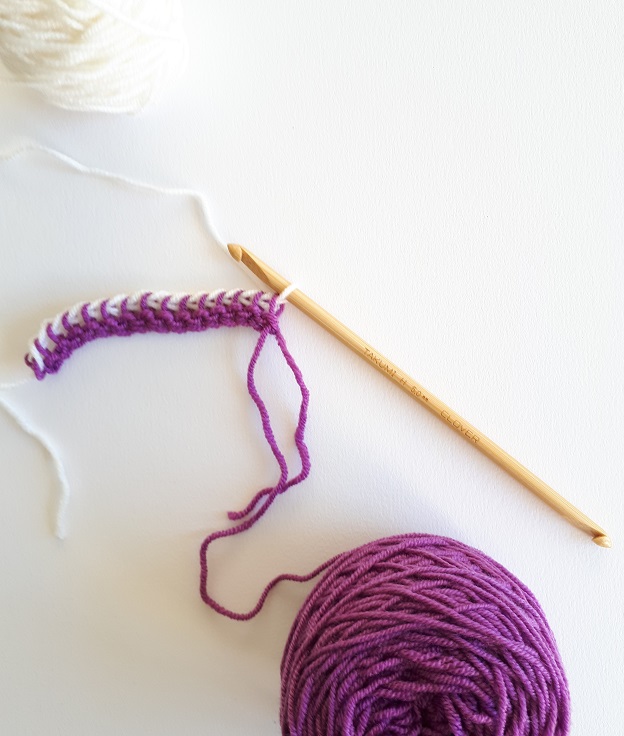
Next row – Forward pass
Both threads of yarn (white and purple) are now on the same side of the hook. You have 1 loop in the new yarn (white) on your hook. With this same yarn, make a forward pass in Tunisian simple stitches.
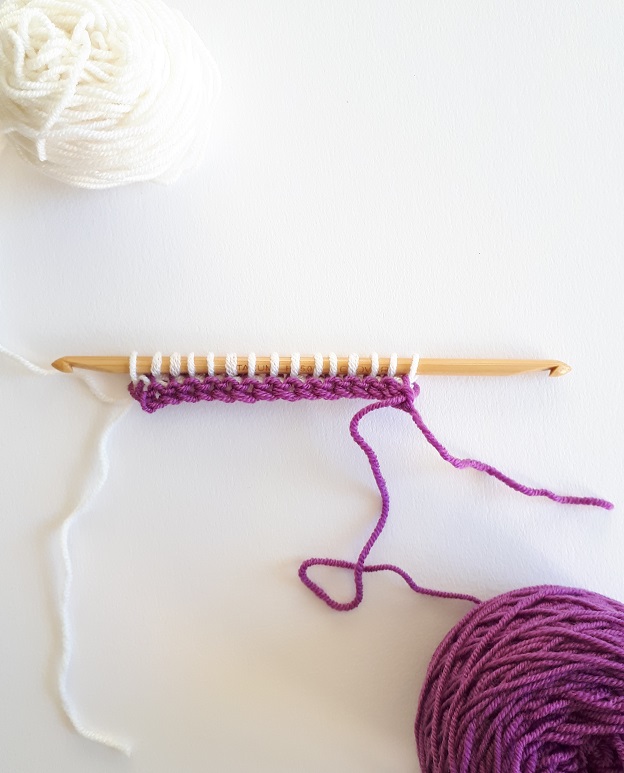
Next row – Return pass
Again, just like in the previous return pass, this is where you turn your work. With the opposite head of the hook, where the first yarn (purple) is still on hold, you pick that yarn thread and start a return pass. Chain 1, then yarn over and pull yarn through 2 loops again and again until there is only 1 loop left on the hook.
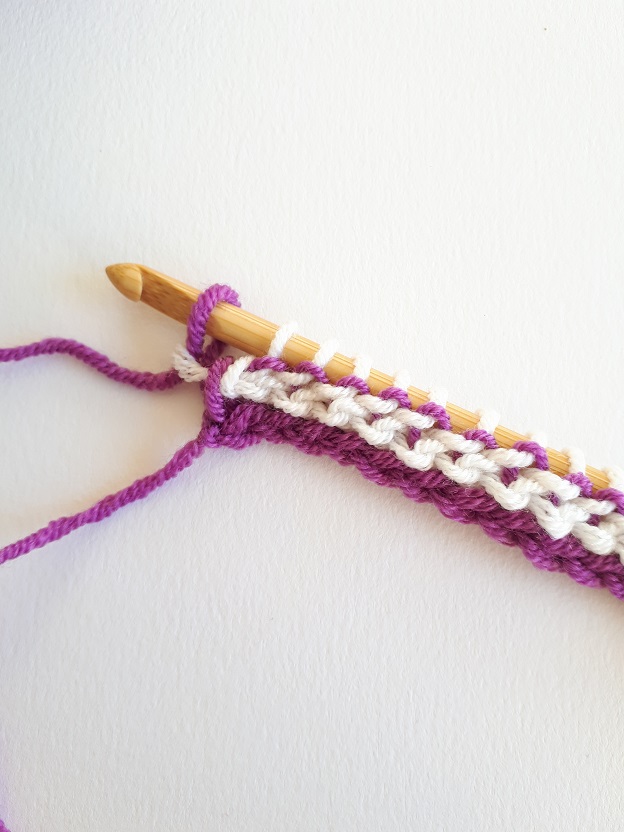
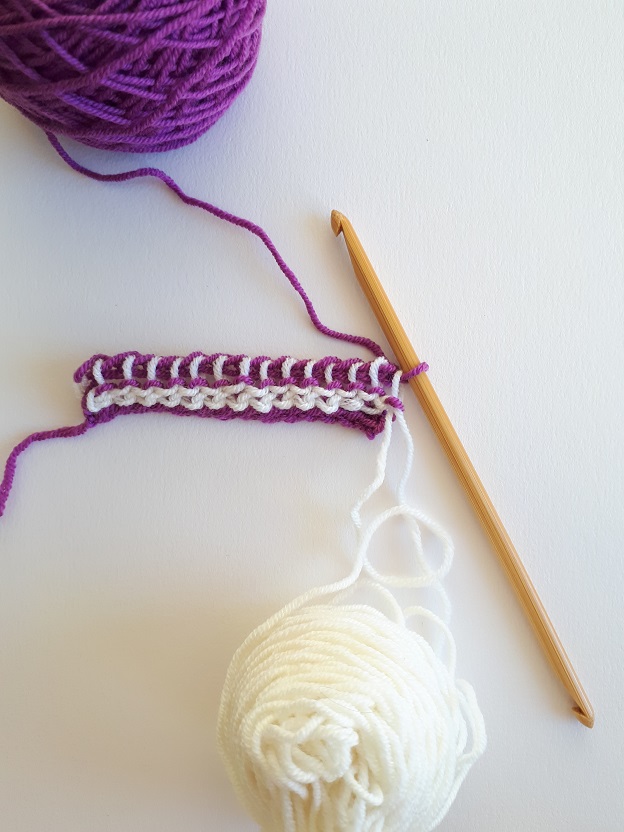
Following rows
Keep that sequence where you work a forward pass with the same yarn as the previous return pass. Turn your work, use the opposite head of the hook and change color only when you start a return pass.
You get a fabric the texture of which is identical on both sides. One color is dominant on one side, the other color is dominant on the other side.
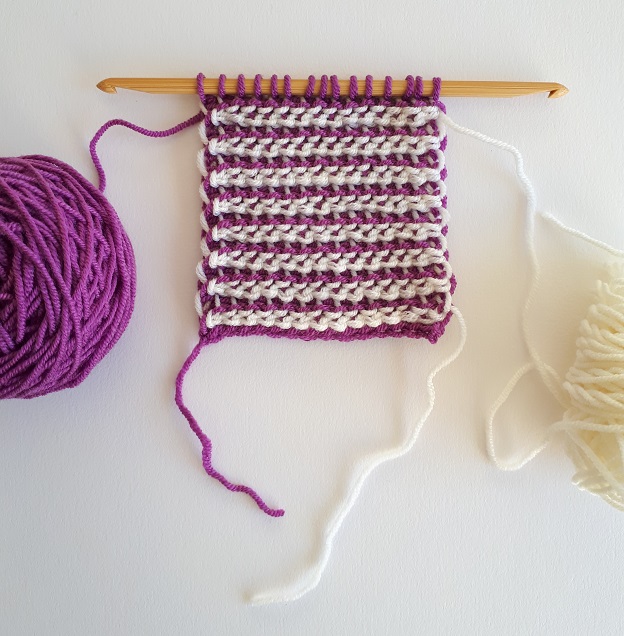
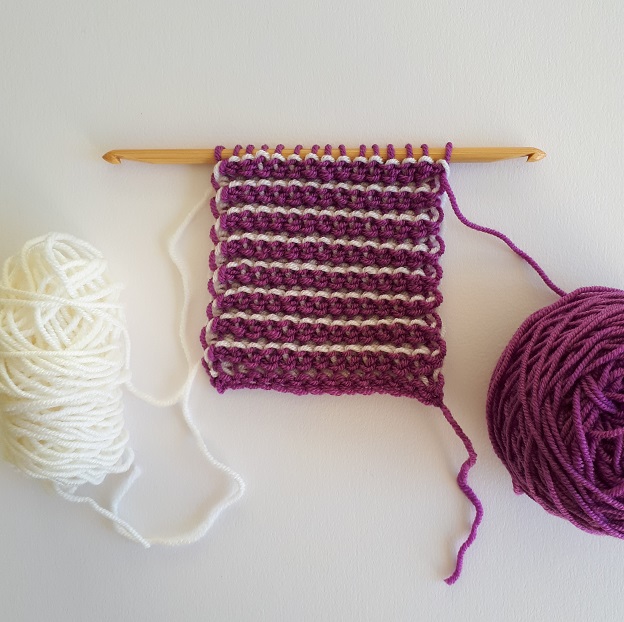
Endless possibilities
Technically the only difference between working with a single-ended or double-ended hook is in whether you turn your work or not and use one or 2 threads of yarn. These 2 elements have a major impact on both texture and color work.
This short tutorial aims at showing the basic elements of a work done flat with a double-ended hook. Keep in mind that you can opt for different stitches and colors.
About neat edges
To get edges as neat as possible, don’t hesitate to adjust the tension of the yarn thread left on hold when you pick it up.
On the photo below, the purple yarn thread forms a loop somewhat elongated, loose.
Pull on the yarn thread, gently, before starting the return pass. Don’t pull too much. You want edges that have about the same tension as all the other stitches in the rows.
